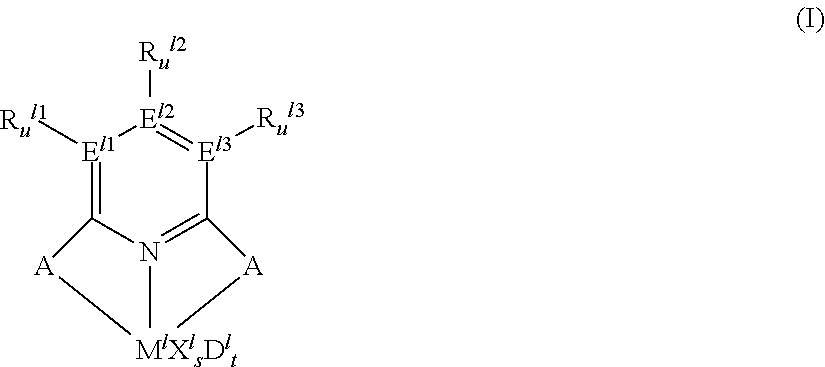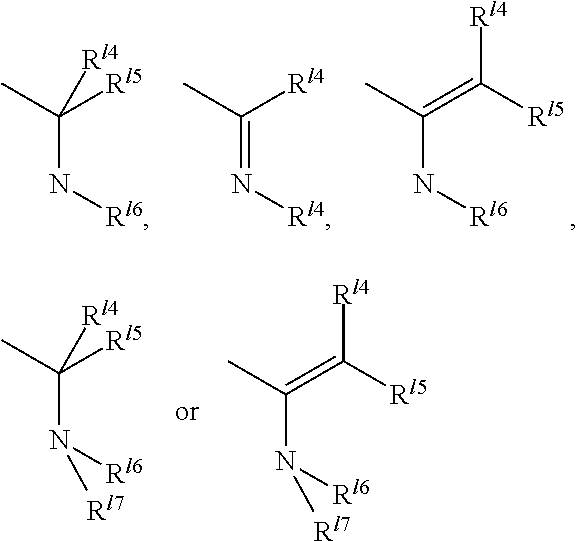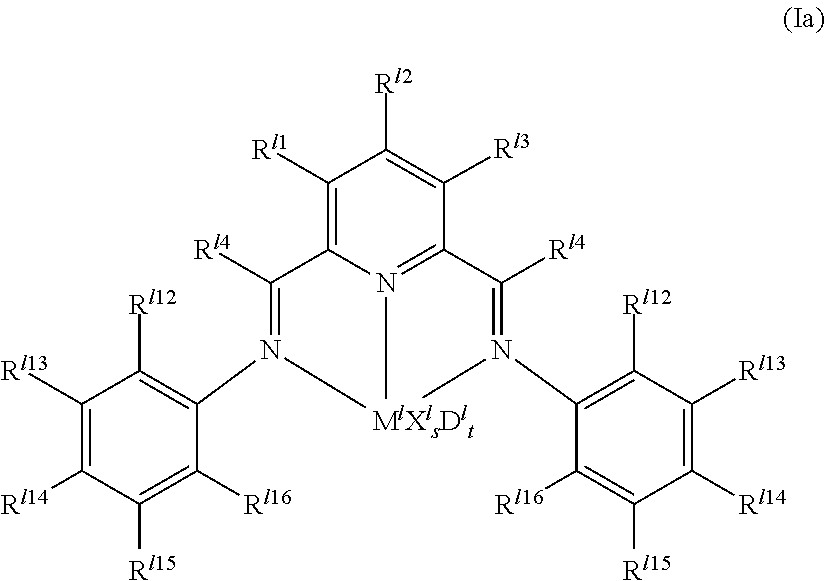Process for the preparation of supported catalysts
a catalyst and catalyst technology, applied in the field of catalyst preparation, can solve the problems of unacceptably long time-consuming operation, reduced activity of catalyst systems, and less effective vacuum application, and achieve the effect of convenient preparation, short drying time and no affecting the functionality of catalysts
- Summary
- Abstract
- Description
- Claims
- Application Information
AI Technical Summary
Benefits of technology
Problems solved by technology
Method used
Image
Examples
example 1
1.1 2,6-Diacetylpyridine bis(2-chloro-4,6-dimethylphenylimine) iron dichloride
1.1a 2,6-Diacetylpyridine bis(2-chloro-4,6-dimethylphenylimine)
[0071]In a 200 ml round bottom flask, 2.0 g of 2,6-diacetylpyridine (M=163.176 g / mol, 0.0123 mol) and 75 ml of methanol were placed. Next 3.81 g of 2-chloro-4,6-dimethylaniline (M=155.627 g / mol, 0.0245 mole) and three drops of formic acid were added and the solution stirred at room temperature under nitrogen for four days, at which time no precipitate had formed. The reaction then was refluxed for 24 h. GC analysis indicated that the reaction was incomplete. Refluxing was continued for a total of 1 week. Solvent was stripped from the reaction mixture via rotary evaporator. Flash chromatography through a basic alumina column (eluted with hexane / ethyl acetate 20:1) lead to isolation of an oil. The oil was then crystallized from methanol / methylene chloride to receive pale yellow crystals.
1.1b [2,6-Diacetylpyridine bis(2-chloro-4,6dimethylphenylimi...
example 3
[0084]A 1.7-l-Steelautoclave was filled under Argon with 100 g polyethylene powder having a particle size of >1 mm at 70° C. (the polyethylene powder was already dried at 80° C. for 8 hours in vacuum and stored under Argon atmosphere). 125 mg triisobutylaluminum (TiBAl in heptane 50 mg / ml), 6.5 ml heptane as well as 50 mg Costelan AS 100 (Costelan in heptane 50 mg / ml) were added. After 5 minutes of stirring the catalyst of Example 1.3 was added and the catalyst dosing unit was rinsed with 2 ml heptane. First the pressure was increased up to 10 bar at 70° C. by adding nitrogen, subsequently a pressure of 20 bar was adjusted by feeding ethylene and hexene in constant ratio to ethylene (0.1 ml / g). The pressure of 20 bar at 70° C. was kept constant for 1 hour via adding additional ethylene and hexene, fed in constant ratio to ethylene (0.1 ml / g), during polymerization. After one hour the pressure was released. The polymer was removed from the autoclave and sieved ...
PUM
| Property | Measurement | Unit |
|---|---|---|
| temperature | aaaaa | aaaaa |
| pressure | aaaaa | aaaaa |
| pressure | aaaaa | aaaaa |
Abstract
Description
Claims
Application Information
 Login to View More
Login to View More - R&D
- Intellectual Property
- Life Sciences
- Materials
- Tech Scout
- Unparalleled Data Quality
- Higher Quality Content
- 60% Fewer Hallucinations
Browse by: Latest US Patents, China's latest patents, Technical Efficacy Thesaurus, Application Domain, Technology Topic, Popular Technical Reports.
© 2025 PatSnap. All rights reserved.Legal|Privacy policy|Modern Slavery Act Transparency Statement|Sitemap|About US| Contact US: help@patsnap.com



